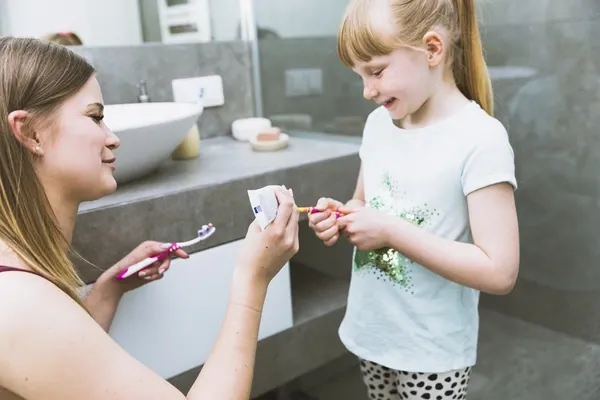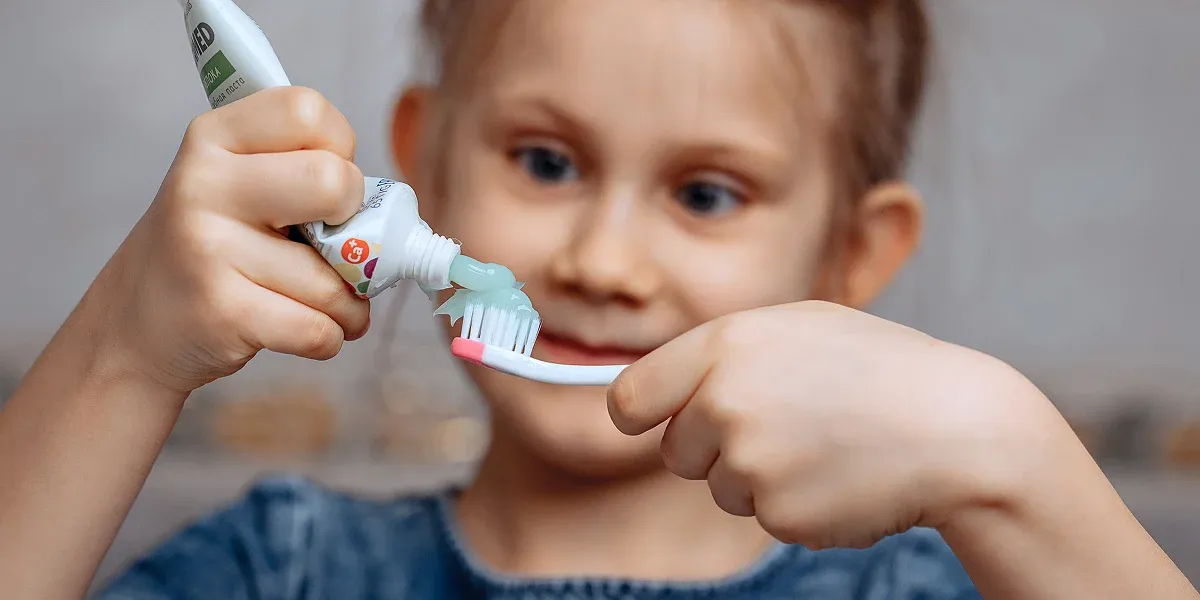
Fluoride Magic: Stronger Smiles for Life Fluoride Benefits for Kids
If you're a parent, you've probably wondered at some point if fluoride is safe for kids. It's a common question and a valid one. With so much information (and misinformation) floating around online, it's easy to feel unsure about what's best for your child's dental health.
That's why we're kicking off our new series, "Fluoride Magic: Stronger Smiles for Life – Fluoride Benefits for Kids," to help guide you through everything you need to know about fluoride and your child's teeth.
This first blog focuses on one of the most important, and most asked questions: Is fluoride safe for children? We'll explore fluoride, how it works, and the benefits and potential risks parents should know. The goal is to give you a clear, balanced view so you can feel comfortable about your child's dental care.
What Even Is Fluoride, and Why Is It in Toothpaste and Water?
Fluoride is a naturally occurring mineral. It's been studied for decades and is well known in the dental world for its ability to protect teeth, especially young, developing ones.
So why is fluoride added to things like toothpaste and tap water? Simple: because it helps prevent cavities. When fluoride comes into contact with tooth enamel, it makes the surface stronger and more resistant to acid attacks caused by bacteria and sugary foods. This is especially helpful for kids whose teeth are still growing and more vulnerable to decay.
However, fluoride doesn't just protect; it helps reverse tooth damage before it becomes full-blown cavities. This process is called remineralization. When enamel starts to weaken, fluoride helps restore lost minerals, keeping the tooth strong and healthy.
Over time, the consistent use of fluoride can make a big difference in a child's overall dental health. That's why it's a key ingredient in most children's toothpaste, and many communities have small, safe amounts of fluoride in their drinking water.

The Role of Fluoride in Cavity Prevention and Healthy Teeth
Fluoride is one of our most effective tools when protecting children's teeth. Its benefits are well-documented and widely supported by pediatric dentists and major health organizations, including the American Dental Association and the Centers for Disease Control and Prevention.
One of the biggest benefits of fluoride is cavity prevention. Tooth decay is one of children's most common chronic conditions, and fluoride significantly lowers that risk. Regular exposure to fluoride, whether through drinking water, toothpaste, or professional fluoride treatment, helps strengthen enamel and reduce the chances of cavities forming in the first place.
Another advantage is that fluoride works silently in the background. While brushing and flossing are essential, fluoride adds an extra layer of defense. It helps remineralize weak spots in the enamel before they become decayed, and it does this every day with just a small amount.
Children's fluoride needs are also unique. As their teeth develop, fluoride helps lay the foundation for a stronger, healthier adult smile. The earlier kids start receiving proper fluoride care, the more long-term protection they'll have.
Used appropriately, fluoride is a safe and valuable part of a child's dental care routine. It's key to building lifelong oral health when combined with regular dental visits and good brushing habits.
But... Is Fluoride Too Powerful? Understanding the Risks
Like anything related to health, balance is key, even with something as beneficial as fluoride. While fluoride is safe when used appropriately, parents must be aware of how too much of it can affect children, especially young ones.
The most commonly discussed fluoride risk is a condition called dental fluorosis. This happens when a child takes too much fluoride while their permanent teeth still form under the gums. It doesn't cause pain or damage, but it can lead to faint white spots or streaks on the teeth. In most cases, fluorosis is mild and only noticeable to a dentist. Still, it's something parents should know about when considering fluoride use at home.
Overexposure typically happens when young children use too much fluoride toothpaste or accidentally swallow it instead of spitting it out. That's why using the correct amount of toothpaste and supervising brushing is important—especially for kids under 6.
Some parents also wonder about fluoride in drinking water. In the U.S., fluoride levels in public water supplies are carefully regulated to stay within safe limits. According to the CDC, community water fluoridation has been shown to reduce tooth decay by about 25% in children and adults without increasing health risks.
So, What's the Safe Amount of Fluoride for Kids?
Here's where things get a bit technical, but don't worry, we'll keep it simple. The key with fluoride isn't just whether it's used but how much. Too little might not protect your child's teeth, and too much can lead to side effects like mild fluorosis (those faint white lines on teeth).
According to the American Dental Association (ADA) and the Centers for Disease Control and Prevention (CDC), the right amount of fluoride depends on your child's age and how they're getting it, whether through drinking water, toothpaste, or treatments at the dental office.
- For babies (under 3 years): If your local tap water contains fluoride, that's often enough. When brushing starts, use a smear of fluoride toothpaste about the size of a grain of rice.
- For kids aged 3-6, increase that to a pea-sized amount of fluoride toothpaste. Still, keep an eye out; many little ones love the taste of toothpaste and might try to swallow it like candy!
- For school-age kids and teens: Dentists may recommend fluoride treatments during check-ups if the child is at higher risk for cavities.
Fluoride Treatments: When and Why They're Needed
Sometimes, brushing twice a day and drinking tap water with fluoride just isn't enough, especially for kids who are more prone to cavities. That's where fluoride treatments offer an extra layer of defense.
It's a quick, painless application of concentrated fluoride, usually a gel, foam, or varnish, done right at the dental office.
When are fluoride treatments recommended?
- If your child has a history of cavities
- If they're wearing braces (which can trap food and bacteria)
- If their drinking water has low fluoride levels
- If they have special needs that make brushing or flossing more difficult
- Or if your dentist simply sees signs of early decay during a regular exam
The best part? Depending on your child's oral health habits and cavity risk, it takes just a few minutes and offers long-lasting protection, often up to several months.
These treatments aren't meant to replace brushing and flossing — just to boost their effectiveness. And when used alongside fluoride toothpaste and healthy snacks, they help create the perfect cavity-fighting team. Remember, your child's dentist will always guide you on when and how often fluoride treatments are needed, so there's no guesswork involved.

The Bottom Line: Fluoride and Your Child's Smile
Fluoride may seem like a tiny thing, but it plays a huge role in your child's oral health. From strengthening enamel to preventing early cavities, fluoride is one of the most trusted tools in modern dental care.
So the next time you see "fluoride" on a toothpaste label or hear your child's dentist recommend a treatment, you'll know precisely why it matters.
Are you curious if your child is getting the right amount of fluoride?
Let's talk! Schedule a visit with our friendly team at Happy Kids Dental, and let's keep those little smiles strong, healthy, and bright for years to come.
Contact your kids' dentist in Stockton, Dr. Sajjad Rizvi, D.D.S. at Happy Kids Dental, to know more about Long-Term Oral Health Maintenance for Kids.
Resource:
Long-Term Oral Health Maintenance for Kids
*This media/content or any other on this website does not prescribe, recommend, or prevent any treatment or procedure. Therefore, we highly recommend that you get the advice of a qualified dentist or other medical practitioners regarding your specific dental condition*
Subscribe To Our Newsletter
Get Updates And Learn From The Best


